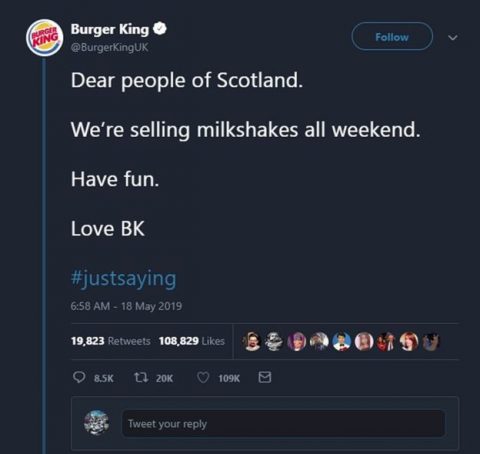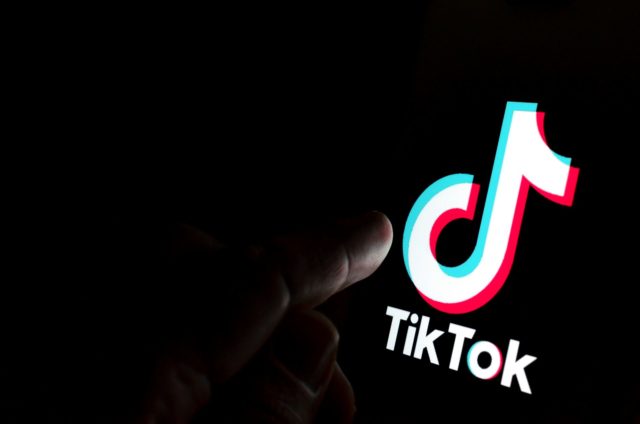It’s no secret that social media provides a huge range of opportunities for businesses, brands and individuals looking to better connect with their audience, increase awareness and improve their personal brand. But, many businesses value posting frequently and responding quickly more highly than accuracy and quality posts. And, what happens when it all goes wrong?
Unfortunately, over the internet, it’s very easy for people to take things out of context, meaning that those running social accounts need to be extra vigilant about what they’re posting, and when. Take a look at these social media disasters to find out what to do if something bad does happen, and our top tips on how to avoid them altogether.
#MondayMotivation gone wrong
In 2019, Chase Bank garnered criticism from customers and the wider social community when they posted a poorly executed and tone-deaf tweet that essentially shamed their customers for taking cabs, buying takeaway coffee and generally spending their own hard-earned money. Even US Senator Elizabeth Warren got involved by sharing her version of the tweet:
.@Chase: why aren’t customers saving money?
Taxpayers: we lost our jobs/homes/savings but gave you a $25b bailout
Workers: employers don’t pay living wages
Economists: rising costs + stagnant wages = 0 savings
Chase: guess we’ll never know
Everyone: seriously?
#MoneyMotivation pic.twitter.com/WcboMr5MCE— Elizabeth Warren (@SenWarren) April 29, 2019
What does this teach us?
To put it simply – don’t insult your target audience. Consider your tone of voice and the purpose of every social post before it goes live. Sometimes, when you’ve written something, it can be hard to take an objective look, so if you are concerned, send it around a few people to get a better understanding of how others will perceive your content.
Tesla’s ‘unbreakable windows’ that shattered during the demonstration…
Tesla suffered an embarrassing mishap when their CEO Elon Musk took to the world stage to highlight the benefits of its shatterproof windows, only for them to break when he took a sledgehammer to them.
What does this teach us?
Never make bold claims that you can’t live up to – and always test your products and services before you do a live demo to fix any kinks or issues.
The hijacking of Arsenal’s Adidas launch
Warning, the following content is highly offensive and may cause distress to some readers.
Adidas came under fire in the summer of 2019, after their #DareToCreate campaign, which used Twitter personalisation to offer customers a virtual shirt with their social handle on the back, was hijacked by anti-Semitic and racist tweeters, resulting in some awful images.


What does this teach us?
The true lesson here is that automation is not always the right way to go, and, even though the vast majority of customers used the campaign as it was intended, businesses need to be wary of those on social media whose sole purpose is to offend and cause issues.
When Burger King took things too far
In 2018 and 2019, there were a series of ‘milkshaking’ incidents where politicians and famous people were targeted by rioters. Following the attack on Nigel Farage, a McDonald’s restaurant in Edinburgh close to where he was planning to hold a rally later that day was asked by police not to sell milkshakes. Following their announcement, however, Burger King responded with the following:

The tweet was removed after the ASA issued a press release stating that the ad could encourage anti-social behaviour, but Burger King completely missed the mark on this one, and while the tweet itself has disappeared, online conversations and evidence still remain.
What does this teach us?
While brands should always aim to stay up to date with the latest news and trends, sometimes it’s better to just stay out of any controversy.
Snapchat’s ‘streak’ fail
Back in 2018, Snapchat had to deal with a social media mishap that caused a whole load of embarrassment for the social media giant. They implemented an automated keyword bot that automatically replied to the word ‘streak’ on Twitter, with disastrous results. Not only did customers very quickly cotton on to the fail, but online trolls decided to take it one step further by testing out ridiculous tweets just to see if the bot would respond.
England have lost there world cup streak. Any way they could get it back?
— Jack Scott (@JackScott__) July 11, 2018
Thanks for reaching out! We’re happy to help. Please go to: https://t.co/pLsBLYE56r and select ‘My Snapstreaks disappeared’ 🔥
— Snapchat Support (@snapchatsupport) July 11, 2018
I’m lost but there are people running around naked, should I streak?
— Stephen Bubb (@Bubbstep) July 11, 2018
Thanks for reaching out! We’re happy to help. Please go to: https://t.co/pLsBLYE56r and select ‘My Snapstreaks disappeared’ 🔥
— Snapchat Support (@snapchatsupport) July 11, 2018
What does this teach us?
While keyword bots may seem like a good idea, to your customers, you may come across as impersonal, especially when the automated response doesn’t actually answer the specific query or comment, or might not make sense at all. To put it simply, often, automated responses do more harm than good, and businesses need to put a contingency plan in place if they are looking to use these features.
Our top tips for avoiding a social media disaster:
Implement a social media policy for your business
The best way to avoid any social media disasters is to create an in-depth social media policy for both your official business channels and individual employees. Not only should this policy offer tone of voice and image guidelines, but should also include advice on best practices, confidentiality, copyright law and how to respond to queries or complaints. This will help you to recover more smoothly if anything does happen as there will be clear processes already in place.
Have a contingency plan in place
At the end of the day, we’re all human, and we all make mistakes. Similarly, on social media, it’s very easy to misconstrue content, while due to it’s fast-moving nature, platforms and what people are saying online can be unpredictable at the best of times. So, you’ll definitely need to come up with a plan of action that your team understands and knows how to implement just in case something does go wrong. This includes keeping an eye on feedback, especially negative comments, and dealing with them quickie; and in the right way. At a basic level, remember that acknowledgement and an apology goes a long way.
Dedicate a specific team to run your social channels
Ideally, you would have a social media team in place to manage your online channels, but we understand that that’s not always the case. At the very least, dedicate one or two people to running your social channels. Not only will this help to keep the style and tone of voice the same, but it’ll also make it easier to keep track of who has permissions to post where along with keeping a tighter lid on social activity.
Think before you post
It might seem obvious, but stopping to think before you post is crucial on social media, especially when things can easily be taken out of context. Consider these points every time you create a post:
T – is it True?
H – is it Helpful?
I – is it Inspiring?
N – is it Necessary?
K – is it Kind?
Don’t forget, you can download your free copy of our 2020 social media content calendar now to help with planning and keeping on track of posts.
Learn from your mistakes and keep a close eye on your accounts
While we hope nothing does go awry, it would be naive to think that all activity on social media will be positive. Learn from your mistakes – if something didn’t go right, find out why, and how you can act differently in the future. It’s a good idea to keep examples of what not to do along with good examples in order for employees to clearly see the difference between them.
Similarly, make sure to monitor your accounts at all times – if you are receiving negative feedback, try and respond to the customer and fix the issue before it gains any more attention.
Do you want Team Hallam on your side?
Get in touch to arrange an informal chat and learn how our experts can help your business to thrive online.







